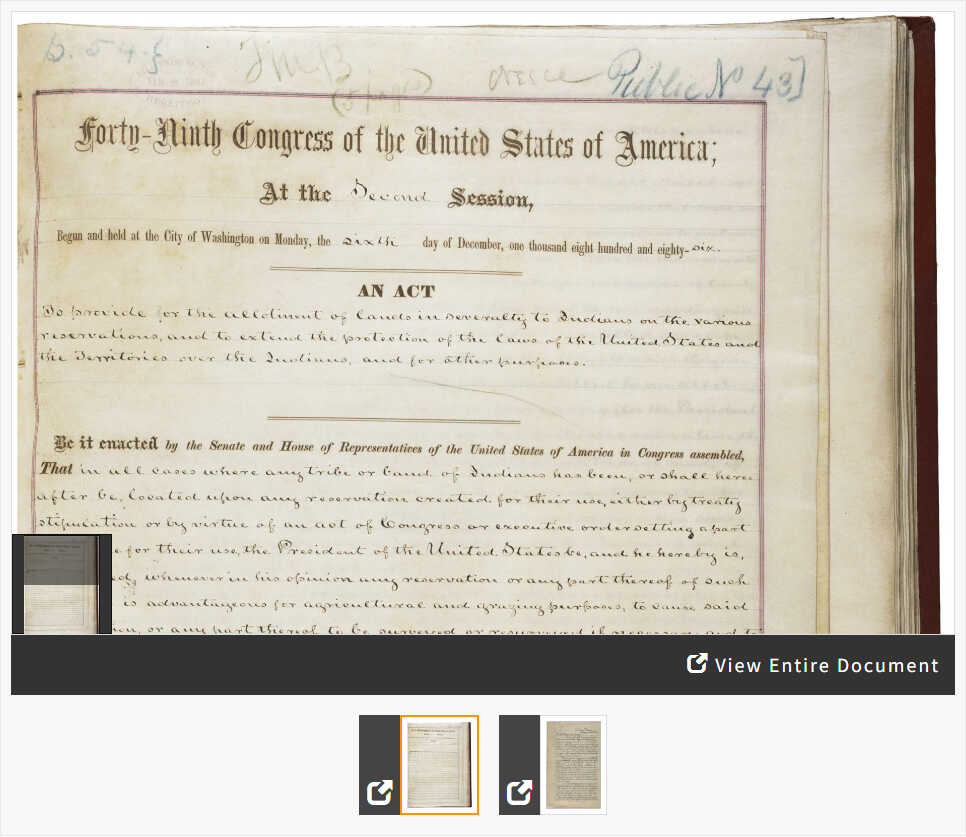In this activity, students will compare and contrast two documents related to U.S. government land policies toward American Indians: one written from the view of the federal government (the Dawes Act), and the other from the Hopi Nation (a petition). They will identify the perspectives presented in the documents and consider their relationship to one another.
Suggested Teaching Instructions
Use this activity while teaching about Federal Indian Policy, the history of U.S.-Native American relations, civics and government, the Bill of Rights and the First Amendment right to petition, or perspective in primary sources.
The activity can be completed individually or in small groups, and should take approximately 45 minutes, including discussion. For grades 8-12.
Begin by displaying the activity for the full class and modeling
document-analysis techniques, especially if students are not used to analyzing primary sources.
Next, ask students to begin the activity, which will provide the following background information on Federal Indian Policy:
During the 19th century, the U.S. government practiced a policy of assimilation toward Native Communities, creating laws that supported this approach. For example, American Indian children were often forcibly removed from their communities and enrolled in government-run Indian boarding schools. These schools forbid students from speaking their native languages and practicing their traditional cultures, as school administrators sought to assimilate the American Indian children into mainstream "White" society. The federal government also changed how Native Communities owned land as another attempt at assimilation.
Students will be instructed to look closely at the two documents presented:
the Dawes Act, or an "Act to Provide for the Allotment of Lands in Severalty to Indians on the Various Reservations," and a Hopi petition asking for title to, and tribal ownership of, their lands. Remind them to click on View Entire Document to see all pages of the documents, as well as a transcript if needed.
Students should employ document-analysis techniques to answer the questions below the documents:
- Who made it? Was it a person or a group?
- When was it made?
- What information is included about who made it?
- Who is the intended audience?
- What else was happening at the time this was created? How does that context (or background information) help you understand why it was created?
- Why was this primary source made?
- Is there a "point of view" or bias? List details from the text that reveal the creator’s perspective or point of view.
When they have finished analyzing each document, students should click on "When You're Done" where they will be presented with the the following questions to consider in preparation for a class discussion:
- What do you think was the relationship between these two primary sources? Were they in opposition to each other? Was one a rebuttal or response to the other? [The Hopi petition asks the federal government to give the Hopi title to their lands instead of individually allotting each tribal member a plot, as had been prescribed by the Dawes Act of 1887.]
- Were the two different perspectives presented in the two documents in opposition? Could they have come together?
- These primary sources shows two perspectives on the topic of American Indian assimilation and land ownership. What other perspectives would there have been?
- What perspective do you bring to this topic and source? How does your background and the time in which you live affect this?
Bring the full class back together and lead a discussion on what details students noted in their comparison of the documents, and their responses to the final questions. Ask students what other types of documents could be researched to learn more. Examples could include contemporary letters, other petitions, or minutes of debates in Congress.





